22 Hearty & Authentic Northern European Soups to Warm Up
Northern European soups blend hearty traditions with comforting flavors that warm both body and soul during chilly seasons.
Cold climates have inspired remarkable culinary innovations across Nordic regions, transforming simple ingredients into nourishing meals.
Regional cooking styles reflect landscapes where agriculture and fishing shape ingredient selection and preparation techniques.
Robust recipes often incorporate root vegetables, seafood, and fermented elements that showcase local cultural heritage.
Culinary traditions communicate stories of survival, resourcefulness, and community through each carefully crafted bowl.
Nordic kitchens transform challenging environmental conditions into delectable, nutrient-dense creations that celebrate seasonal bounty.
Ancestral knowledge passes through generations, preserving cooking methods that honor regional ingredients and cooking wisdom.
These 22 authentic northern european soups will tantalize your taste buds and transport you across stunning Nordic landscapes:
Authentic Northern European Soups for Chilly Days
Northern Europe’s soups are the ultimate remedy for cold weather. Root vegetables, tender meats, and creamy broths deliver comfort and tradition in every steaming bowl.
Salmon Soup (Lohikeitto)
Lohikeitto represents Finland's warm salmon soup brimming with rich maritime flavors and comforting winter ingredients.
Nordic fishermen developed this creamy broth-based dish showcasing fresh salmon fillets as its star component.
Finnish kitchens traditionally prepare lohikeitto with chunky salmon pieces simmered alongside diced potatoes and sweet carrots.
Fresh dill provides a bright herbal accent complementing the fish's natural richness.
Butter and cream create a smooth, luxurious texture that warms you instantly.
Generations of Scandinavian families have enjoyed this hearty soup as a staple meal during cold months.
Restaurants across Finland serve lohikeitto with buttered rye bread or zesty lemon wedges.
Regional variations might include additional herbs or different fish stock preparations.
Finnish Fish Soup (Kalakeitto)
Kalakeitto is a hearty Finnish fish soup brimming with regional seafood and seasonal vegetables simmered in a creamy, flavorful broth.
Finnish fishermen traditionally crafted this warming dish using fresh catches like salmon, trout, and pike from local waters.
Chunks of fish blend seamlessly with diced potatoes, carrots, and leeks in a rich base of butter and cooking cream.
Aromatic dill, allspice, bay leaves, salt, and pepper infuse the soup with deep, comforting flavors.
Fresh ingredients form the backbone of this rustic meal, reflecting Finland's coastal culinary heritage.
Generations have enjoyed kalakeitto as a nourishing staple during cold Nordic winters.
Cooking methods vary slightly between regions, but the core ingredients remain consistent.
Chanterelle Soup (Kanttarellikeitto)
Kanttarellikeitto is Finland's golden mushroom soup showcasing the rich, earthy flavors of chanterelle mushrooms.
Finnish kitchens celebrate this creamy soup by sautéing chopped chanterelles with butter and onions until moisture vanishes.
Chefs sprinkle flour into the mushroom mixture, creating a smooth base for vegetable stock.
Gradual stock addition transforms the soup into a silky consistency before heavy cream enriches its texture.
Parsley adds a fresh green accent to the golden-brown soup.
Salt and pepper balance the intense mushroom flavor, enhancing the dish's rustic charm.
Traditional preparation methods ensure each spoonful delivers an authentic taste of Finnish culinary heritage.
Danish Chicken Soup (Hnsekdssuppe)
Danish chicken soup stands out as a comforting, nourishing broth packed with rich flavors and traditional Danish culinary techniques.
Small meatballs made from pork or beef float alongside tender shredded chicken in a clear, aromatic base brimming with fresh vegetables like carrots and leeks.
Fragrant herbs such as thyme and parsley add depth and complexity to the soup's profile.
Soft dumplings provide additional texture and substance to this classic dish.
Restaurants and home kitchens across Denmark frequently serve this soup as a warming meal during colder months.
Danish cooks carefully prepare the broth to ensure maximum flavor and tenderness.
Shredded chicken from the soup often finds its way into other traditional Danish dishes like hns i asparges mini-tarts.
Nutritious and satisfying, this soup represents a beloved staple of Danish comfort food.
Fiskesuppe
Fiskesuppe reveals Norway's maritime culinary heritage through a luxurious creamy fish soup brimming with ocean-fresh ingredients.
Coastal regions craft this traditional broth using multiple fish varieties and shellfish swimming in a rich, butter-infused base with milk and cream.
Root vegetables provide earthy depth and complexity to the soup's smooth texture.
Norwegian kitchens transform local seafood into a comforting meal representing generations of maritime cooking techniques.
Family recipes often include seasonal fish selections depending on regional availability.
Fresh herbs and a bright lemon juice drizzle elevate the soup's final flavor profile.
Fishermen and home cooks alike cherish this warming dish during cold Nordic winters.
Each spoonful connects diners to Norway's deep relationship with sea harvests.
Finnish Pea Soup (Hernekeitto)
Hernekeitto stands as Finland's national split pea soup, a robust winter meal traditionally served every Thursday with tender pork chunks that warm Finnish souls.
Finnish families gather around steaming bowls of this hearty soup, connecting generations through a culinary ritual deeply embedded in cultural practices.
Winter months highlight hernekeitto's significance, when comfort food becomes essential for surviving cold temperatures.
Laskiainen, an ancient pagan holiday preceding Christian Lenten, provides historical context for this rich meal tradition.
Finnish households prepare hernekeitto using classic ingredients like split peas, pork, and root vegetables.
Sweet pannukakku, an oven-baked pancake served with berry jam, often accompanies the soup as a complementary dessert.
Medieval food customs influence this meal's preparation and significance.
Historical connections between pagan celebrations and Christian practices shape hernekeitto's enduring popularity across Finland.
Kjotsupa
Kjötsúpa is an iconic Icelandic lamb soup brimming with rich, warming flavors that define traditional Nordic comfort food.
Highland shepherds developed this rustic one-pot meal to sustain themselves during harsh winter months using readily available ingredients.
Lamb meat on the bone provides deep, intense flavor while root vegetables like carrots, rutabaga, and potatoes create a hearty base.
Oatmeal or rice naturally thickens the broth, adding texture and substance to the dish.
Fresh and dried herbs infuse the soup with aromatic complexity.
Icelanders often prepare this soup as a weekend family meal or during cold weather to chase away winter chills.
Optional ingredients such as leeks or cabbage enhance the soup's nutritional profile.
Sour milk served alongside adds a tangy complement to the soup's robust flavor.
Kasvissosekeitto
Kasvissosekeitto represents Finnish comfort food through its smooth, creamy vegetable puree that transforms simple ingredients into a warming meal.
Finnish home kitchens traditionally prepare this soup using fresh root vegetables like potatoes, carrots, and celery simmered in rich vegetable stock.
Onions provide depth and complexity to the base flavor profile of the soup.
Cream adds luxurious richness and silky texture to the vegetable mixture.
Cooks carefully boil and then puree the vegetables until achieving a uniform, velvety consistency.
Salt and black pepper enhance the natural vegetable flavors throughout the preparation.
Fresh dill or parsley typically garnish the soup before serving, adding a bright herbal note.
Served steaming hot, kasvissosekeitto offers a satisfying and nutritious meal perfect for cold Nordic days.
Bergensk Fiskesuppe
Bergensk fiskesuppe represents Bergen's maritime culinary heritage, a rich fish soup brimming with local seafood and robust flavors.
Pollock or salmon form the soup's heart, swimming alongside vegetables like onions, carrots, leeks, and celery in a creamy broth.
Sour cream adds luxurious depth, while vinegar, salt, pepper, and sugar balance the maritime essence.
Traditional recipes sometimes include fish bones from saithe, haddock, or cod to intensify the stock's complexity.
Fish balls occasionally enhance the soup's texture and protein profile.
Chives provide a fresh green garnish that brightens each spoonful.
Crusty bread serves as the perfect companion, allowing you to soak up every delicious drop of this Bergen classic.
Cauliflower Soup (Blomkalsuppe)
Blomkalsuppe represents a rich Danish cauliflower soup blending creamy textures with savory depth.
Nordic kitchens craft this traditional recipe by transforming cauliflower into a silky base through careful preparation techniques.
Meat stock provides fundamental flavor complexity to the soup's foundation.
Butter-sautéed onions create a robust initial layer of taste.
Egg yolks and cream contribute luxurious smoothness and richness to each spoonful.
Flour helps thicken the liquid into a consistent, velvety consistency.
White pepper and nutmeg add subtle aromatic warmth throughout the dish.
Salt balances the overall flavor profile, ensuring a harmonious blend of ingredients.
Kesakeitto
Kesakeitto is a beloved Finnish summer soup bursting with fresh seasonal vegetables simmered in a creamy milk-based broth.
Garden vegetables like potatoes, carrots, peas, green beans, and cauliflower create its signature light texture and vibrant flavor profile.
Finnish families traditionally prepare this soup during peak summer months when vegetables are most abundant and tender.
Farmers and home cooks gather ingredients directly from gardens or local markets for maximum freshness.
Spinach adds a subtle green color and nutritional boost to the soup.
Dill provides a delicate herbal note that complements the vegetables' natural sweetness.
Milk and cream create a smooth, silky base that binds all ingredients together.
Salt and black pepper enhance the soup's simple yet satisfying taste.
Artsoppa
Artsoppa is a hearty Swedish yellow pea soup traditionally prepared by resourceful rural communities as a filling, nutrient-dense meal.
Distinctive for its thick, stew-like consistency and bright yellow color, this soup originated among low-income families who cooked all ingredients in a single pot.
Swedish households have long served artsoppa on Thursdays, a custom rooted in historical pre-Friday fasting practices.
Thin slices of pink salt pork add rich flavor to the soup, which also incorporates warming spices like marjoram, ginger, and cloves.
Vegetarian versions often accompany mustard and boiled potatoes, creating a complete meal experience.
When served without meat, the dish typically concludes with thin, golden-brown pancakes called plättar.
These delicate pancakes pair beautifully with various fruit jams, providing a sweet finish to the substantial soup.
Sodd
Soddis represents Norway's hearty national meal featuring tender mutton and robust meatballs swimming in a clear, aromatic broth.
Traditional Norwegian families prepare this comforting dish with carefully diced meat from lamb or mutton mixed with chunky carrots and potatoes.
Regional variations allow cooks to add different spices and herbs that enhance the broth's flavor profile.
Winter months see soddis becoming a popular warming meal across Norwegian households.
Mountain regions often use more lamb meat in their versions compared to coastal areas.
Salt and pepper remain the primary seasonings for this simple yet nourishing meal.
Norwegian grandmothers typically pass down specific preparation techniques through generations.
Rural communities consider soddis a staple winter dinner that connects families through shared culinary traditions.
Kttsoppa
Kottsoppa represents Swedish comfort cuisine with its robust meat and vegetable soup crafted from tender boiled beef simmered alongside root vegetables like carrots, parsnips, onions, celery, and leeks.
Swedish families traditionally prepare this warming dish during cold winter months for lunch or dinner.
Hunters and rural communities originally developed kottsoppa as a substantial meal providing essential nutrients and energy.
Classic seasoning includes white peppercorns, thyme, bay leaves, parsley, and salt, which enhance the soup's deep flavor profile.
Regional variations might incorporate different meat cuts or additional local vegetables.
Swedish households often serve kottsoppa with fresh bread or crisp crackers for a complete meal.
Rural cooking techniques and seasonal ingredient availability significantly influenced this soup's traditional preparation.
Finnish Spinach Soup (Pinaattikeitto)
Pinaattikeitto are creamy Finnish spinach soup crafted with simple Nordic ingredients that blend hearty comfort and nutritious green vegetables.
Finnish home kitchens traditionally prepare this smooth soup using fresh spinach, butter, and milk as core components.
Flour creates a silky texture when whisked carefully into melted butter and heated milk.
Salt, white pepper, and sugar enhance the soup's delicate flavor profile.
Hard-boiled eggs often garnish the soup, adding protein and visual interest.
Finnish families serve pinaattikeitto as a warming lunch or light dinner option.
Winter meals frequently feature this green soup as a nourishing staple.
Rural Finnish regions especially embrace this straightforward recipe passed through generations.
Danish Split Pea Soup (Gule Rter)
Split Pea Soup defines Dutch comfort food with its rich, creamy texture and hearty warmth that transforms humble ingredients into a satisfying meal.
Netherlands farmers traditionally prepared this nutritious soup using dried peas, pork, and root vegetables from their gardens.
Regional variations include adding smoked sausage or bacon for extra flavor and protein.
Winter kitchens fill with its welcoming aroma as the soup slowly simmers on stovetops.
Green or yellow split peas create the signature thick consistency that distinguishes this classic dish.
Salt and pepper enhance the soup's natural earthy flavors.
Generations of Dutch families have enjoyed this comforting recipe as a staple winter meal.
Svartsoppa
Svartsoppa is a dark, rich Swedish blood soup that showcases the unique culinary heritage of Skåne, traditionally prepared during St.
Martin's Eve goose feast.
Swedish families gather to enjoy this intense, deeply flavored soup made with fresh goose blood, carefully blended with aromatic spices and hearty stock.
Regional cooks meticulously combine goose blood with carefully selected seasonings to create a deep, almost black soup with complex flavors.
Generations have passed down this distinctive recipe, reflecting the cultural significance of seasonal food traditions in southern Sweden.
Goose stock provides depth and richness to the soup's base, enhancing its robust character.
Historically served as the first course of a celebratory meal, svartsoppa represents a connection to agricultural rhythms and winter feast preparations.
Skilled preparation requires precise techniques to balance the blood's intense flavor with complementary spices.
Skåne's culinary landscape continues to preserve this unique gastronomic tradition through careful preparation and celebration.
Mykyrokka
Mykyrokka represents a robust Finnish blood soup originating from Savo region, featuring distinctive blood dumplings crafted from blood and barley flour.
Regional hunters and farmers historically prepared this nutrient-dense meal during cold winters as a sustainable protein source.
Meat varieties like pork or beef complement the signature dark dumplings.
Potatoes serve as a classic accompanying ingredient.
Preparation involves carefully mixing blood with flour to create unique flat, palm-sized discs.
Cooking techniques require precise temperature control to maintain dumpling integrity.
Finnish rural communities consider this soup a hearty winter staple.
Generations have passed down this traditional recipe as a testament to resourceful northern cuisine.
Orkdal Soup (Rkdalssodd)
Rkdalssodd exemplifies hearty Norwegian regional cuisine, featuring tender lamb slowly simmered with simple ingredients in a traditional soup method.
Orkdal county's signature dish begins with lamb breast or shoulder carefully placed into cold water and brought to a gentle boil.
Cooks meticulously skim surface impurities to ensure a clear broth before seasoning with salt.
Rice, chopped carrots, and minced onions add depth and nutrition to the soup's straightforward preparation.
Cabbage provides additional texture and mild flavor to this comforting meal.
Family recipes often pass down specific techniques for preparing the meat and balancing ingredients.
Salt plays a critical role in developing the soup's subtle yet rich taste profile.
Regional variations might include slight modifications to vegetable selections or cooking times, reflecting local preferences.
Oxtail Soup (Oksehalesuppe)
Oksehalesuppe is a robust Danish soup brimming with deep, meaty flavors from slowly simmered oxtails.
This hearty broth begins by browning oxtails and bacon in margarine, creating a rich base infused with aromatic herbs like marjoram and parsley.
Peppercorns, leeks, parsnips, and celery contribute complex layers of earthiness to the soup's profile.
Salt, soy sauce, and cayenne pepper provide subtle depth and a gentle warmth to each spoonful.
Chopped carrots and tomatoes add brightness and color to the dark, intense liquid.
Each serving promises a comforting bowl that reflects traditional Danish cooking techniques.
Nordic winters find their perfect match in this warming, nourishing soup.
Split Pea Soup With Ham (Ertesuppe Med Flesk)
Ertesuppe med flesk represents a hearty Norwegian soup packed with split peas, smoked ham, leeks, potatoes, and rutabaga simmered to perfection.
Norwegian kitchens traditionally prepare this warming dish by slowly cooking ham and peas until they become tender and develop rich, complex flavors.
Salt enhances the soup's natural taste profile, creating a balanced and satisfying meal.
Smoky ham provides depth and protein to the soup's overall composition.
Split peas contribute essential nutrients and a creamy texture when fully cooked.
Leeks add a mild onion-like flavor that complements the meat's richness.
Potatoes help thicken the soup and provide additional substance.
Rutabaga introduces a subtle sweetness that rounds out the soup's earthy undertones.
Klimppisoppa
Klimppisoppa represents a hearty German beef soup featuring tender meat and potato dumplings loaded with robust vegetables and aromatic herbs.
German home cooks carefully simmer beef with onions, carrots, and turnips for over an hour to develop deep, rich flavors.
Traditional preparation involves boiling whole potatoes until soft, then mashing them into a dough with eggs, stock, and flour.
Seasonings like marjoram, bay leaves, and allspice enhance the soup's complex taste profile.
Mashed potato dumplings are carefully formed and added to the broth, creating a satisfying texture contrast.
Western German regions claim this soup as a comforting winter meal with generations of culinary history.
Meat is typically removed, cooled, and sliced before serving.
Each spoonful offers a warming blend of tender beef, vegetables, and soft potato dumplings.
Why Are Root Vegetables, Fish, Dairy, and Pickled Ingredients So Central to Northern European Soups?
Northern European soups are deeply shaped by the region’s climate, geography, and culinary traditions, making root vegetables, fish, dairy, and pickled ingredients key components:
These ingredients create hearty, balanced soups that are both comforting and reflective of Northern Europe’s environment and culinary heritage.

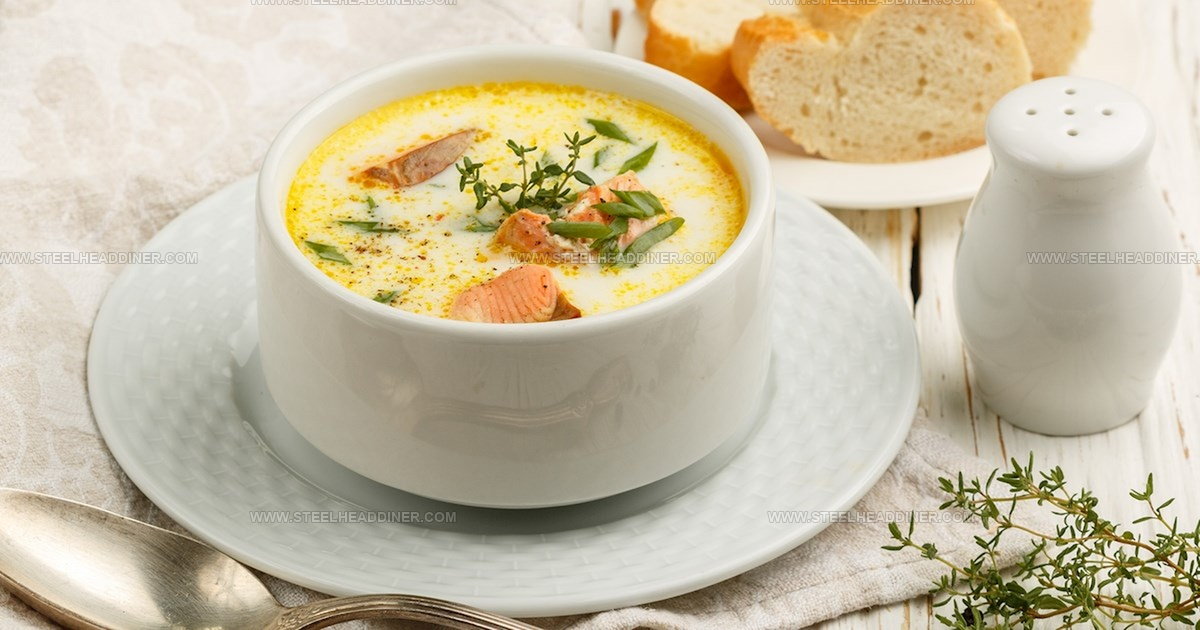
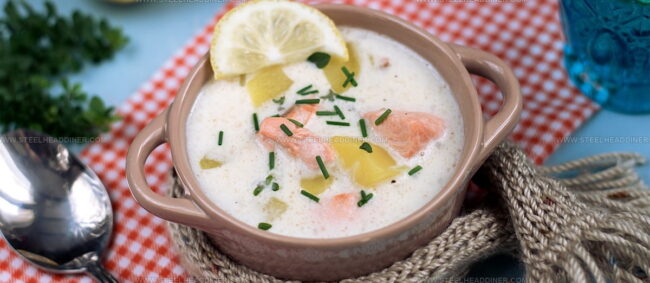
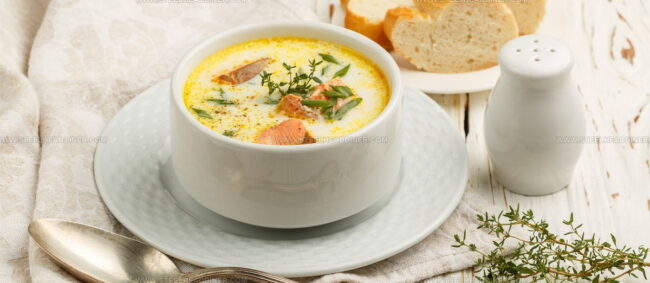

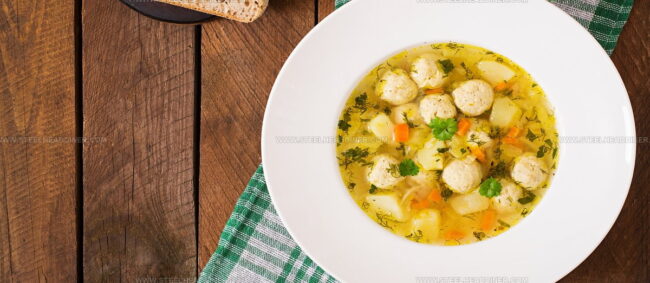
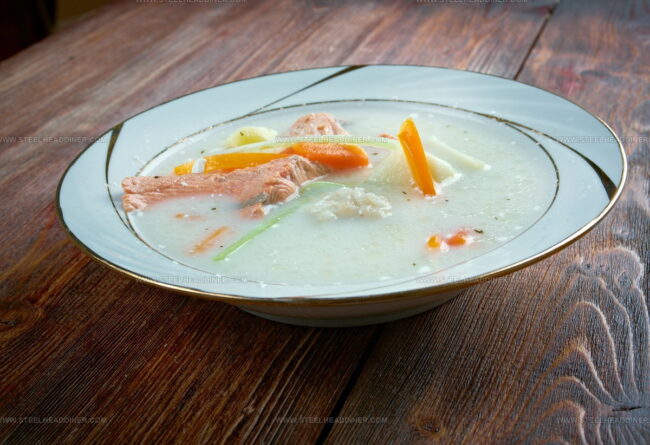
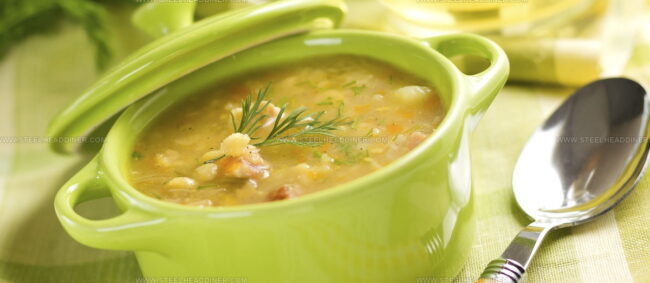
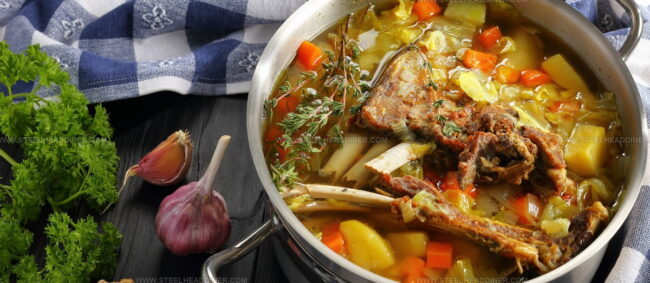
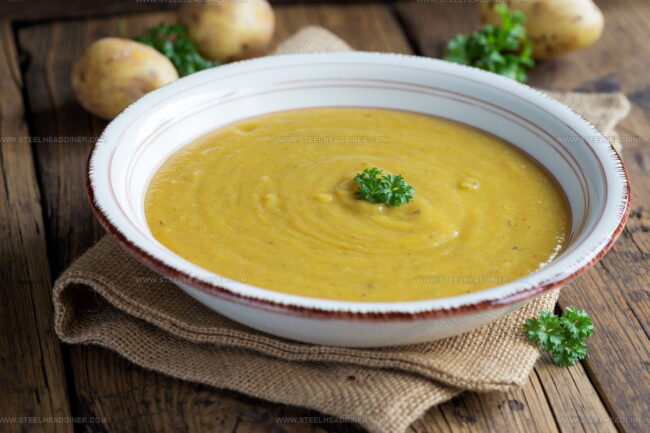
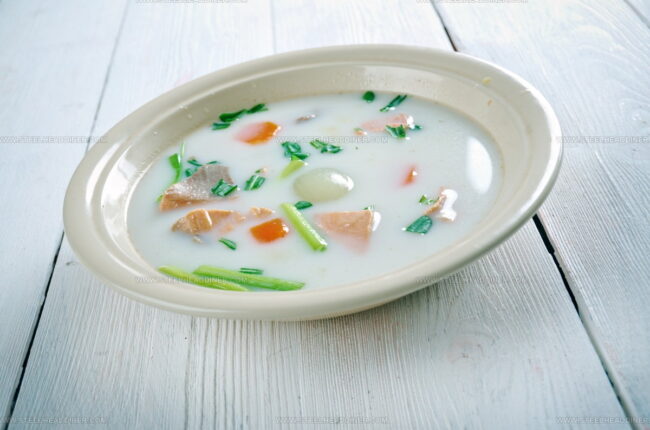
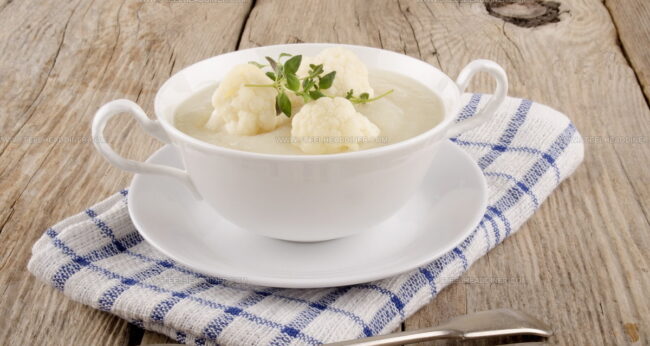
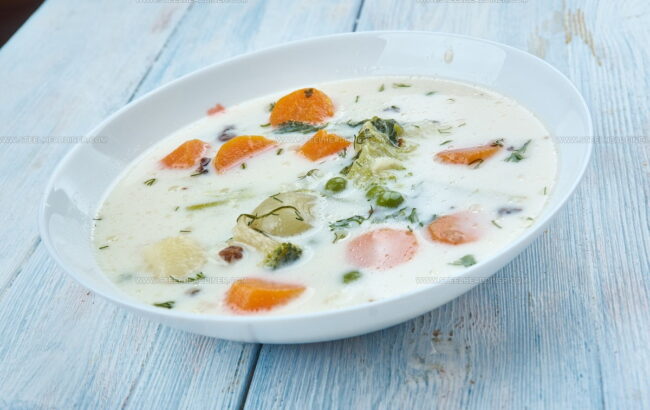
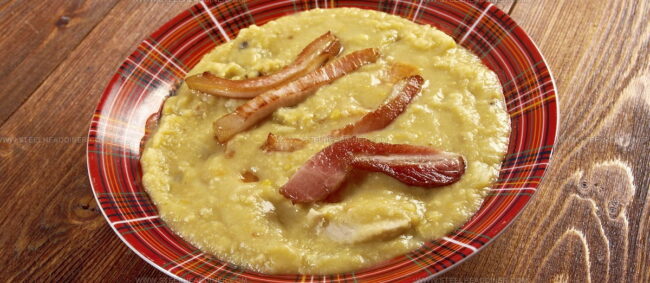

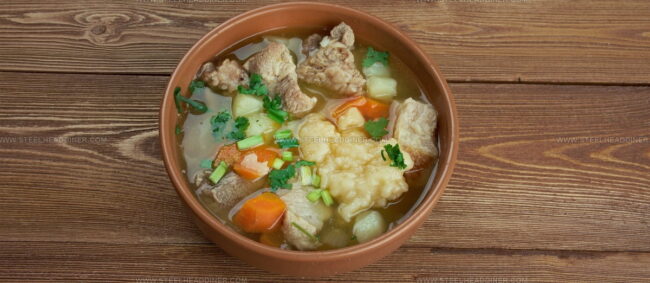

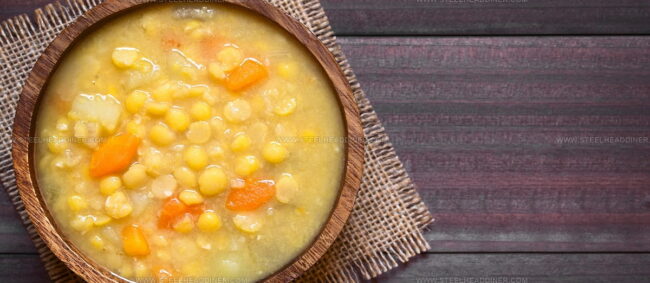
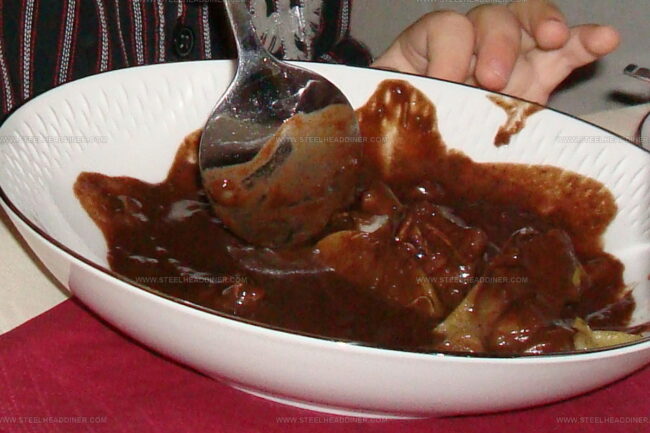
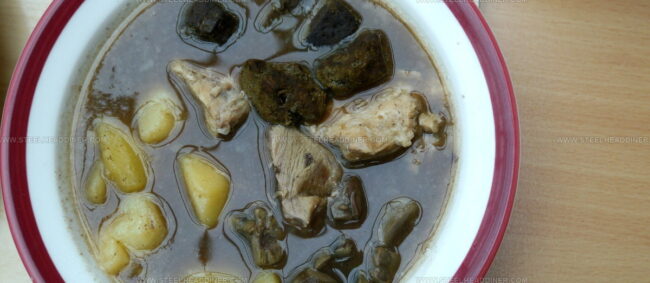
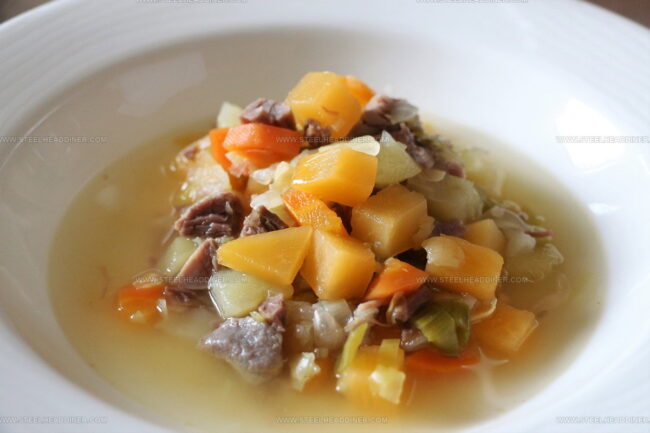
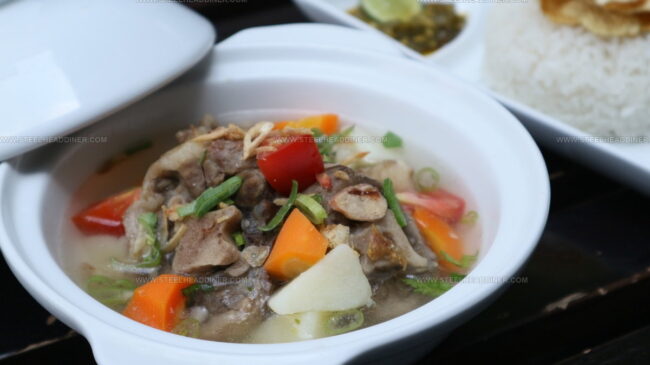
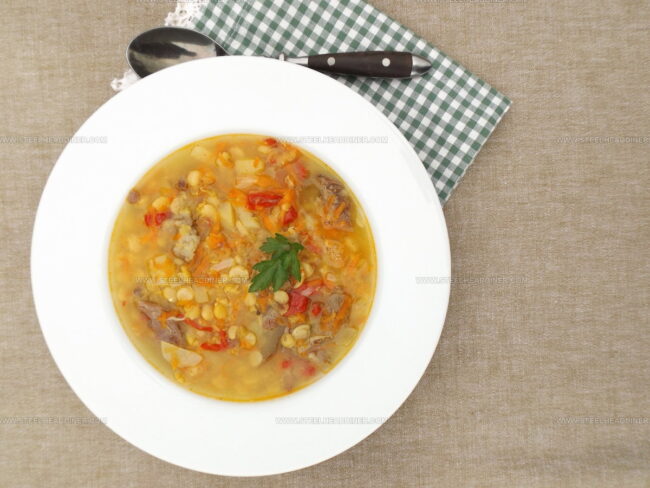
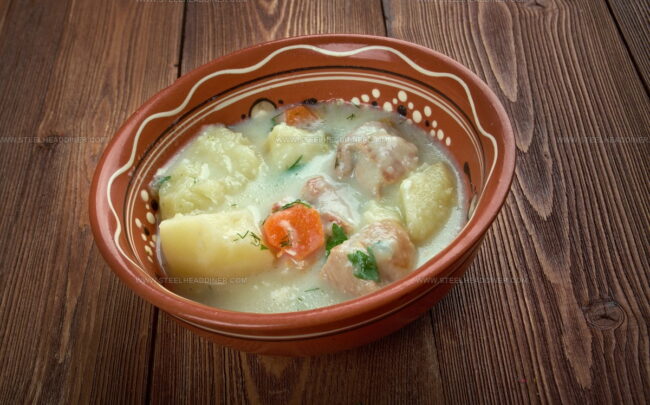
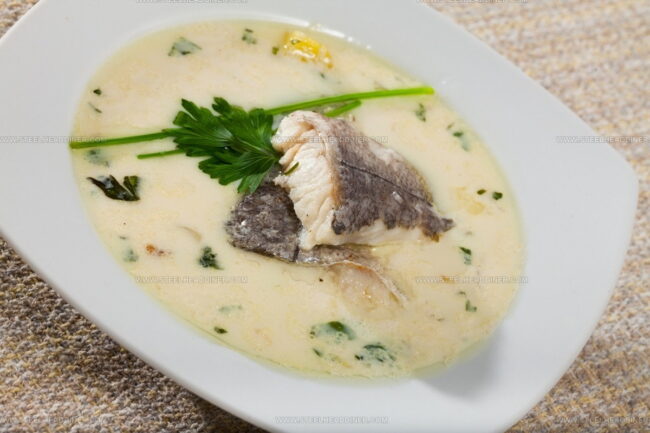
Jack Monroe
Founder & Recipe Innovator
Expertise
Pacific Northwest cuisine, Single-serving recipe development, Sustainable sourcing and cooking, Modern comfort food
Education
Brightwater
Associate of Applied Science in Culinary Arts
Focus: Sustainable cooking, seasonal ingredients, and food systems education
Jack grew up with a fishing rod in one hand and a cast-iron skillet in the other. After graduating from Brightwater: A Center for the Study of Food, he set out to prove that cooking for one could still taste like a feast.
Jack believes that food should feel real: fresh, fearless, and a little wild, just like the rivers he grew up around. For Jack, every single dish is a small adventure, and the best ones are the ones you can cook with heart, not hassle.